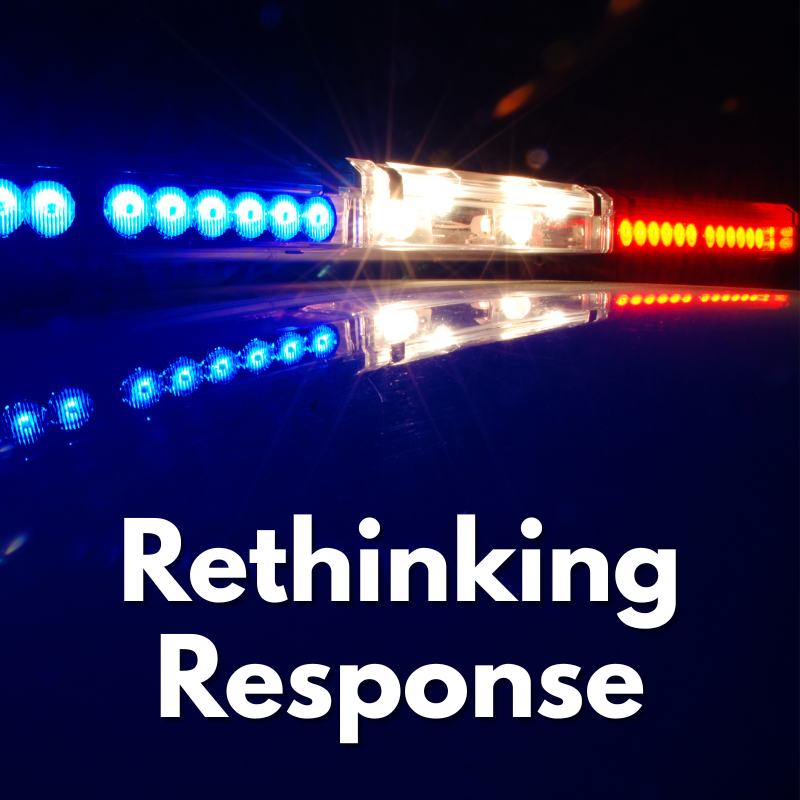Introduction
Training is crucial for effective and equitable law enforcement. Officers frequently confront complex situations requiring quick, decisive action; training officers on how to handle these situations is imperative. And yet, in the U.S., officers typically receive fewer than six months of training. Current police training is heavily skewed toward issues such as use of force and physical defense, leaving significant gaps in areas like mediation and procedural justice.1 Training in de-escalation remains limited.
This training imbalance is evident in critical situations, such as encounters involving substance use and mental health. Individuals with untreated mental illnesses are sixteen times more likely to be killed by police — yet officers typically spend only ten hours on mental health intervention training. Comparatively, on average recruits spend 168 hours on weapons, defensive tactics, and use of force. Similarly, Black individuals are 2.8 times more likely to be killed by police than White individuals. Although implicit bias training now is common in many departments, studies suggest that current training programs have minimal impact on changing officer behavior.
Effective de-escalation and bias training are essential for public safety, but traditional approaches often fall short, particularly in addressing the needs of vulnerable populations. Although some approaches have influenced officer behavior successfully, these remain underutilized across law enforcement agencies. Typically, de-escalation programs involve lectures, group discussions, role-playing, and narratives from individuals with relevant lived experiences. Some have criticized these approaches as too far removed from the high-pressure situations officers face in the field. Additionally, such training is labor-intensive and challenging to implement at scale, which may deter some agencies from embracing it fully.
Although alternative responders, such as mental health professionals, may be better suited to handle certain calls, particularly those involving non-violent crises, police continue to be the primary responders for the vast majority of 911 calls — even those that may not require their involvement. As a result, it is essential that police officers receive comprehensive and effective training to ensure they respond appropriately in situations requiring their presence or in areas where alternative responder programs are unavailable or inadequate.
What AI Can Offer
AI-enabled virtual reality (“VR”) tools offer a promising solution to bridge the gap between theoretical learning and real-world application. VR creates a realistic, immersive 3D environment in which participants use a headset to enter and navigate through a virtual world. In this setting, officers can move freely, interact with objects, and engage with characters. These training environments are adaptable and often simulate a first-person police perspective, prompting officers with scenarios where they must make decisions that can escalate or de-escalate depending on their actions.
VR offers officers an opportunity to practice decision-making in real-time without putting themselves or the public at risk. Some VR modules focus specifically on conflict resolution and de-escalation techniques. These simulations emphasize strategies, such as effective communication and negotiation, which are critical for peacefully resolving encounters. Studies suggest that VR can significantly improve officers’ de-escalation skills by placing them in scenario-based environments that closely resemble real-world interactions.
VR simulations can also be designed to address implicit bias. For example, training modules might include scenarios involving individuals of different races, ages, genders, and backgrounds, allowing officers to practice identifying and addressing their biases. This immersive experience is especially impactful, as some research indicates that VR has the potential to reduce bias more effectively than traditional training methods.
VR offers several benefits in preparing officers to handle high-pressure situations. One advantage is the controlled environment that VR creates, allowing for the repetition and refinement of responses which helps officers build “muscle memory” for effective de-escalation. Another key advantage is the opportunity for officers and supervisors to review scenarios from multiple perspectives. This enables them to refine their responses and continue practicing until they are confident in their abilities. This combination of repetition and feedback helps officers develop the necessary skills to respond effectively in the field.
Considerations for Policymakers
It is critical that agencies adopting VR training prioritize programs that promote safe, community-centered interactions. Many vendors offer VR programs that focus on weapons training and use of force. But, as discussed, far too little of an officer's training focuses on issues such as de-escalation, mediation, and bias. These topics should be a principal focus of an agency’s VR program.
Additionally, more research is needed to evaluate the long-term effectiveness of VR de-escalation training. Early studies, as described above, are promising. But more studies need to be done regarding the impact of these tools.
With thoughtful implementation and sufficient evaluation of efficacy, VR could serve as a transformative tool for enhancing police training and, ultimately, making policing safer.
For more resources on the use of AI in first response, please visit policingproject.org/ai-policy-hub.


